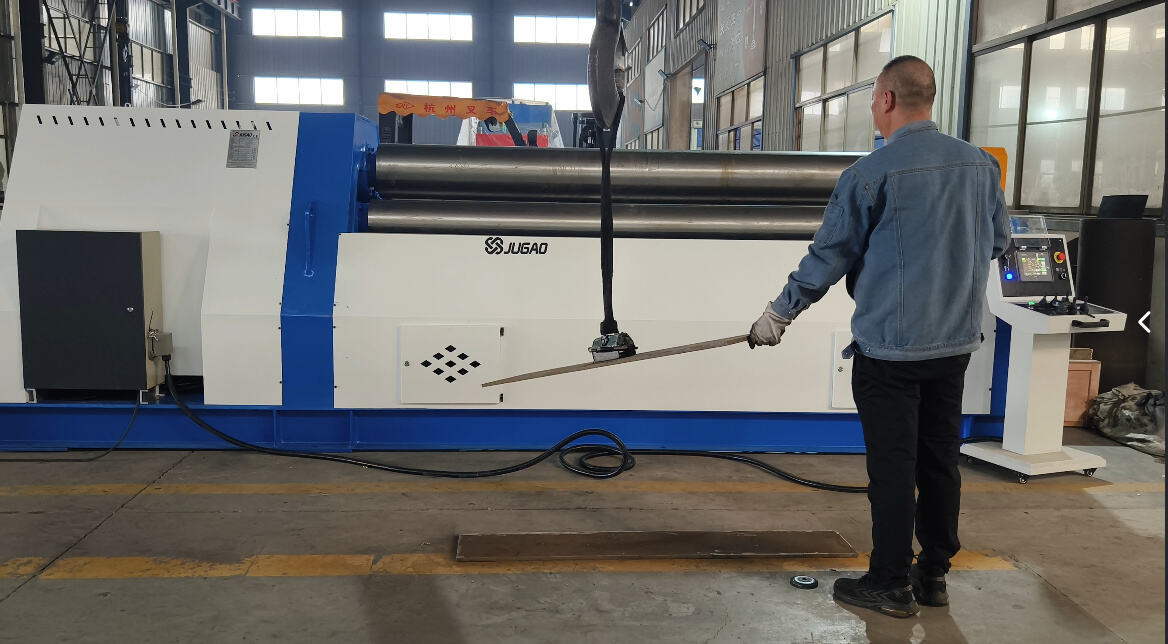Current Market Dynamics for Plate Rolling Machinery
Table of Contents
1.Key Industry Shifts Driving Demand
2.Customized Production and Small-Batch Orders
3.Renewable Energy and Infrastructure Expansion
4.Technological Evolution in Plate Rolling Systems
5.Automation and CNC Integration
6.IoT Connectivity and Predictive Maintenance
7.Sustainable Manufacturing and Energy Efficiency
8.Eco-Conscious Forming Operations
9.Processing Recycled Materials
10.Future Projections and Market Forecast
11.Emerging Market Opportunities
12.Modular and Intelligent System Designs
13.FAQs
Which plate rolling machine configurations dominate current demand?
How does automation impact ROI for rolling equipment?
Do energy-efficient machines justify capital expenditure?
14. Conclusion
Introduction
For professionals evaluating capital investments in metal forming equipment, understanding Plate Rolling Machinery Market Dynamics is critical for strategic decision-making. Whether modernizing production lines or expanding capacity, anticipating industry evolution provides competitive advantages. This analysis examines technological advancements, key demand drivers, automation integration, and future trajectories for plate rolling systems. Those considering equipment acquisition or upgrades will gain insights for aligning strategies with market developments.
Key Industry Shifts Driving Demand
Customized Production and Small-Batch Orders
A defining trend is the surge in demand for tailored manufacturing solutions. Customers increasingly prioritize limited-run, high-tolerance components over standardized mass production. Consequently, equipment purchasers favor machinery featuring rapid tool-change systems, advanced PLCs (Programmable Logic Controllers), and intelligent material handling systems to accommodate flexible production requirements.
Renewable Energy and Infrastructure Expansion
The renewable energy sector—particularly wind tower fabrication and solar mounting structures—drives demand for heavy-plate rolling systems with capacities exceeding 100mm thickness. Concurrently, global infrastructure investments necessitate equipment capable of forming structural components for bridges, pipelines, and heavy machinery.

Technological Evolution in Plate Rolling Systems
Automation and CNC Integration
CNC-controlled plate rolling machines with automated feed systems, precision pre-bending functionality, and servo-hydraulic positioning have become industry standards. These systems deliver micron-level repeatability, reduced operator dependency, and accelerated cycle times. Modern equipment typically integrates with plant-wide ERP/MES platforms for operational synchronization.

IoT Connectivity and Predictive Maintenance
Leading manufacturers incorporate embedded sensors and IIoT (Industrial Internet of Things) analytics to continuously monitor bearing wear, roll deflection, and drive system performance. Predictive maintenance algorithms minimize unplanned downtime through data-driven component replacement scheduling.
Sustainable Manufacturing and Energy Efficiency
Eco-Conscious Forming Operations
Regulatory compliance and operational economics drive development of energy-optimized machinery. Standard features now include:
Variable Frequency Drives (VFDs) for motor control
Regenerative power systems capturing braking energy
Finite Element Analysis (FEA)-optimized frame designs
These innovations maintain forming tonnage while reducing energy consumption by 15-30%.
Processing Recycled Materials
Growing demand exists for machinery capable of forming high-tensile recycled alloys (e.g., EN 1.4021 stainless). This necessitates exceptional structural rigidity (≥300 MPa yield strength), adaptive crowning systems, and programmable springback compensation algorithms.
Future Projections and Market Forecast
Emerging Market Opportunities
Industrialization across Southeast Asia, MENA (Middle East/North Africa), and Sub-Saharan Africa will drive demand for robust, cost-effective plate rolls (3-roll initial pinch models predominating). Key requirements balance 12-25mm capacity with minimal foundation requirements.
Modular and Intelligent System Designs
Future developments will emphasize:
Modular architectures enabling retrofittable upgrades (auxiliary side supports, pressure-boosting packages)
Integrated edge deburring units
AI-powered diagnostic systems with remote OTA (Over-The-Air) updates
AR (Augmented Reality)-assisted maintenance interfaces

FAQs
Which plate rolling machine configurations dominate current demand?
CNC 4-roll plate bending machines with automatic workpiece alignment and real-time deflection compensation are preferred for aerospace and energy applications requiring ≤0.1mm/m straightness tolerance.
How does automation impact ROI for rolling equipment?
While increasing initial investment by 20-35%, automated systems reduce labor costs by 40-60% and material waste by 15-25%, typically achieving payback within 18-30 months through improved OEE (Overall Equipment Effectiveness).
Do energy-efficient machines justify capital expenditure?
Affirmative. Modern systems with regenerative drives reduce energy consumption by 25-40% versus conventional hydromechanical designs. For continuous operations, this translates to ≥$15,000 annual savings per machine at 0.12/kWh electricity rates.
Conclusion
Navigating Plate Rolling Machinery Market Dynamics enables strategic advantage. Investments in automation, sustainable technologies, and application-optimized equipment position enterprises for evolving industrial requirements. When considering plate rolling system acquisition or modernization, consult JUGAO engineering specialists for:
Application-specific machine specifications
ROI analysis with operational cost modeling
Integrated plant automation solutions
Lifetime technical support programs
Contact JUGAO for comprehensive metal forming solutions engineered for precision, efficiency, and long-term productivity.


















































